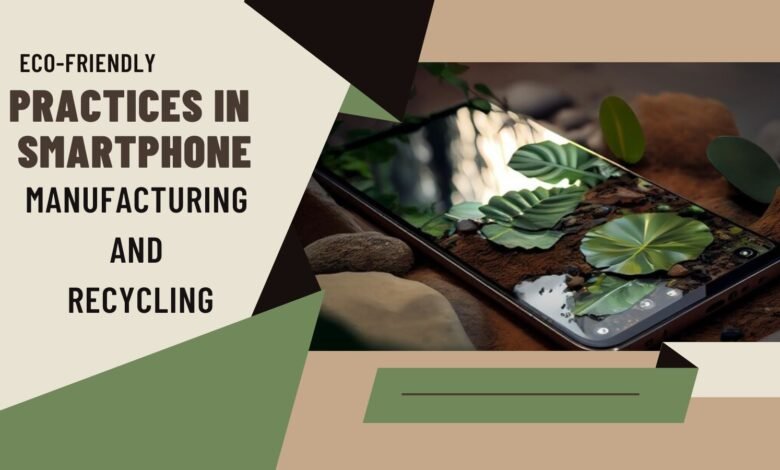Eco-Friendly Practices in Smartphone Manufacturing and Recycling

In an era where technology evolves rapidly, smartphones from companies like Samsung, iPhone and Google have become essential tools in our daily lives. However with their widespread use comes a growing concern for their environmental impact. From the extraction of raw materials to the disposal of old devices, the lifecycle of smartphones has significant environmental implications. Thankfully, there is a growing emphasis on adopting eco-friendly practices in both smartphone manufacturing and recycling to mitigate these concerns.
1. Sustainable Material Sourcing
The journey of a smartphone begins with the extraction of raw materials including metals like gold, silver and copper, as well as rare earth elements like tantalum and lithium. Traditional mining practices often result in habitat destruction, water pollution and carbon emissions. To address this smartphone manufacturers are increasingly turning to sustainable material sourcing practices.

Companies are exploring alternatives such as recycled metals and responsibly sourced minerals to reduce their environmental footprint. Manufacturers can ensure that their supply chains adhere to strict environmental and social standards by partnering with certified suppliers and supporting ethical mining practices.
2. Energy-Efficient Manufacturing Processes
The manufacturing process of smartphones requires significant energy consumption, contributing to greenhouse gas emissions and climate change. To minimize this impact, manufacturers are adopting energy-efficient production techniques and investing in renewable energy sources.
By optimizing production lines, improving equipment efficiency and utilizing renewable energy technologies such as solar and wind power, smartphone manufacturers can reduce their carbon footprint and transition towards more sustainable manufacturing practices.
3. Design for Durability and Repairability
In addition to eco-friendly manufacturing, there is a growing emphasis on designing smartphones for durability and repairability. Manufacturers can extend their lifespan and reduce the frequency of device replacements by creating devices that are built to last and easy to repair.
Modular design concepts, where components can be easily replaced or upgraded, are gaining traction in the smartphone industry. This reduces electronic waste and allows users to repair their devices instead of replacing them entirely, thus promoting a more sustainable approach to consumer electronics.
4. Responsible End-of-Life Management
Responsible end-of-life management becomes essential to minimize electronic waste and maximize resource recovery as smartphones reach the end of their usable life. Recycling programs are becoming increasingly common, allowing consumers to return their old devices for proper disposal and recycling.
Through recycling initiatives, valuable materials such as precious metals, plastics and rare earth elements can be recovered from old smartphones and reused in the manufacturing of new devices. This closed-loop approach helps conserve natural resources and reduces the environmental impact of smartphone production.
5. Consumer Education and Awareness
Ultimately promoting eco-friendly practices in smartphone manufacturing and recycling requires collaboration between manufacturers, consumers, and regulatory bodies. Consumer education and awareness are crucial in encouraging sustainable behaviors, such as proper recycling and responsible consumption.

By raising awareness about the environmental impact of smartphones and providing guidance on eco-friendly practices, consumers can make informed choices that contribute to a more sustainable future.
Conclusion
The transition towards eco-friendly practices in smartphone manufacturing and recycling is essential for mitigating the environmental impact of these ubiquitous devices. By embracing sustainable material sourcing, energy-efficient manufacturing processes, design for durability and repairability, responsible end-of-life management, and consumer education, the smartphone industry and partners like Digi Blogs can move towards a more sustainable and environmentally conscious future.





